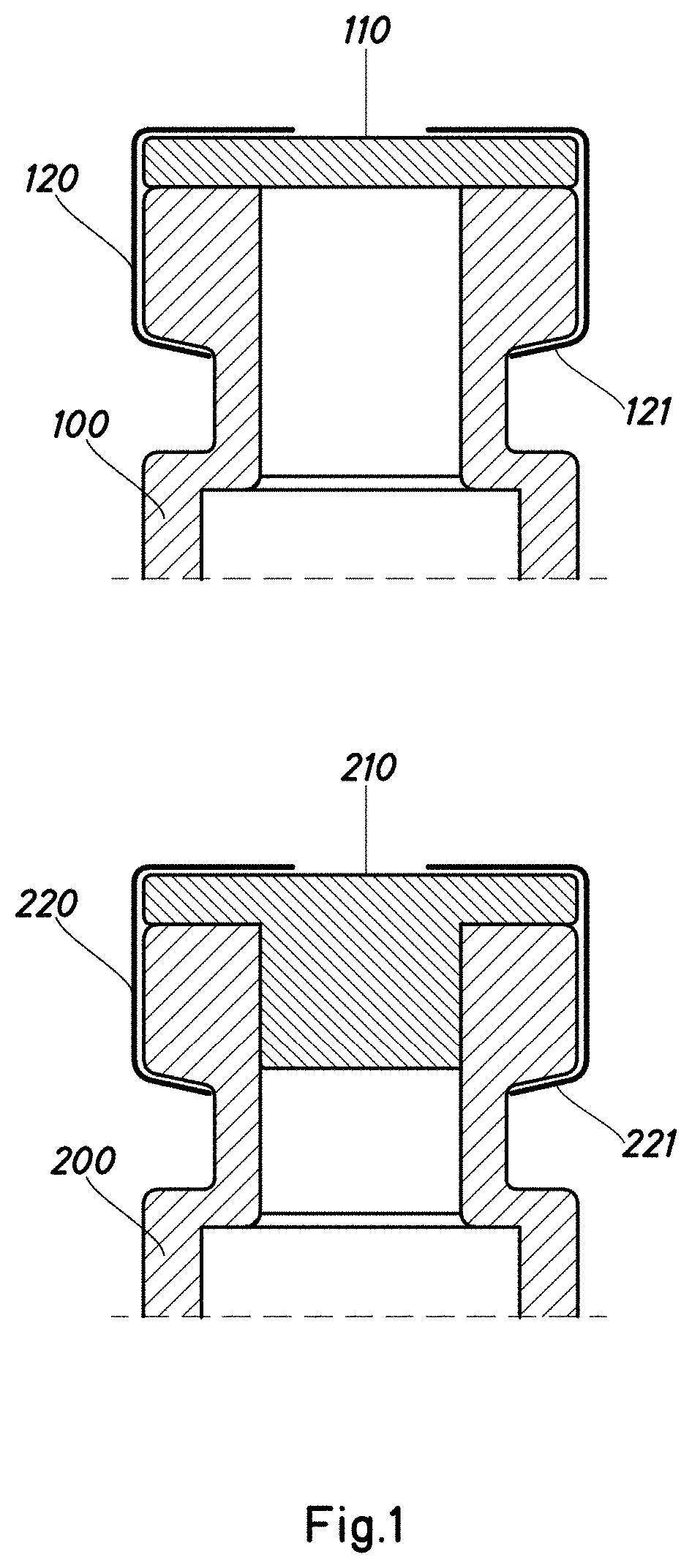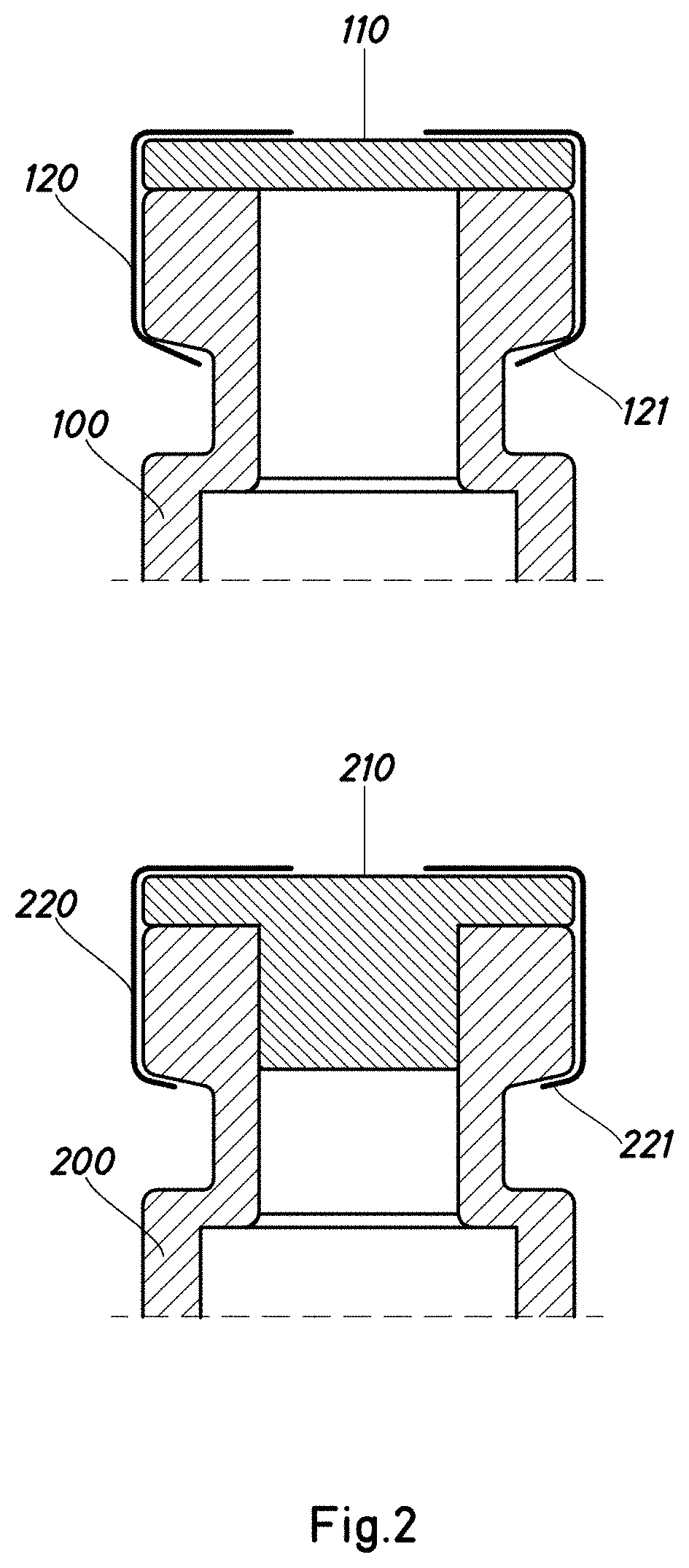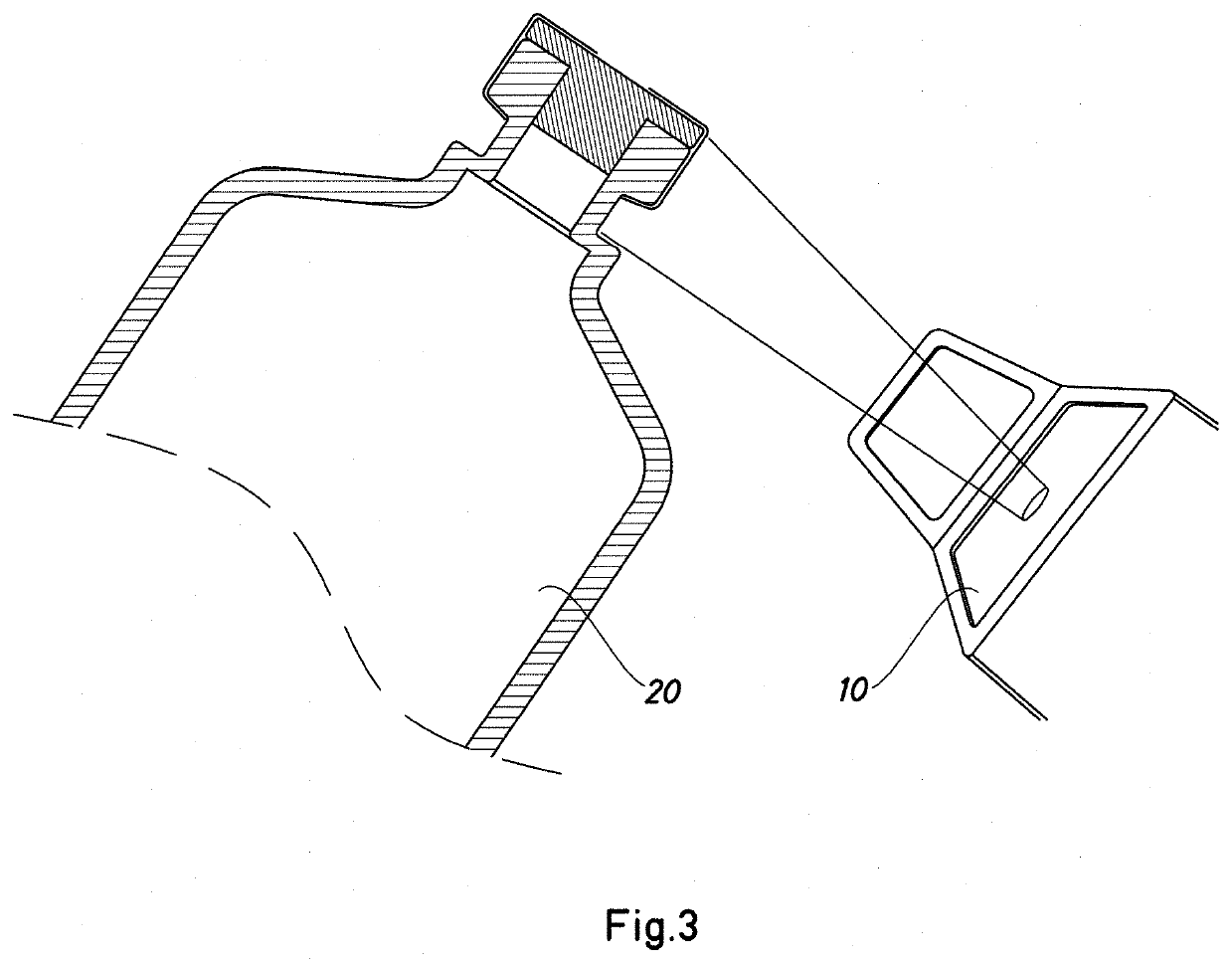Method and device for detecting defects in the closure of encapsulated vials
a technology of encapsulated vials and defects, which is applied in the direction of packaging goods, image data processing, etc., can solve the problems of inability to manually inspect, compromise the integrity or seal of the closure, medium or large scale, etc., and achieve high reflection, high reflection, and different optical properties
- Summary
- Abstract
- Description
- Claims
- Application Information
AI Technical Summary
Benefits of technology
Problems solved by technology
Method used
Image
Examples
Embodiment Construction
[0063]FIG. 1 shows two different vials correctly encapsulated. As can be seen, both vials -100-,-200- have a cap -110-,-210- and a capsule -120-,-220- responsible, among other things, for holding the cap -110-,-210- firmly attached to the respective vial -100-,-200- so that a sealed closure is created. The main difference between the two vials -100-,-200- arises from the fact that the vial -100- has a planar cap -110- positioned above the neck thereof, whereas the vial -200- has a cap -210- which is inserted in the neck or mouth thereof. On both vials -100-,-200- the respective capsule -120-,-220- tightly surrounds the head of the vial -100-,-200-; additionally, as well as fitting tightly on the lower portion of the head of the respective vial -100-,-200-, the lower skirt -121-,-221- of the capsules -120-,-220- has a length similar to that of the head, thus reaching as far as, or practically as far as, the neck of the vial -100-,-200-.
[0064]Although In FIG. 1 only two types of encap...
PUM
| Property | Measurement | Unit |
|---|---|---|
| exposure time | aaaaa | aaaaa |
| exposure time | aaaaa | aaaaa |
| exposure time | aaaaa | aaaaa |
Abstract
Description
Claims
Application Information
 Login to View More
Login to View More - R&D
- Intellectual Property
- Life Sciences
- Materials
- Tech Scout
- Unparalleled Data Quality
- Higher Quality Content
- 60% Fewer Hallucinations
Browse by: Latest US Patents, China's latest patents, Technical Efficacy Thesaurus, Application Domain, Technology Topic, Popular Technical Reports.
© 2025 PatSnap. All rights reserved.Legal|Privacy policy|Modern Slavery Act Transparency Statement|Sitemap|About US| Contact US: help@patsnap.com



